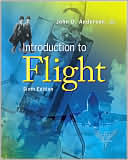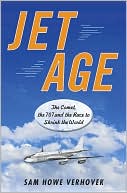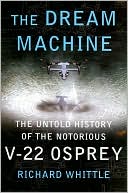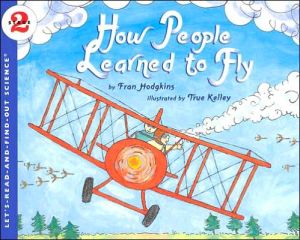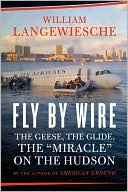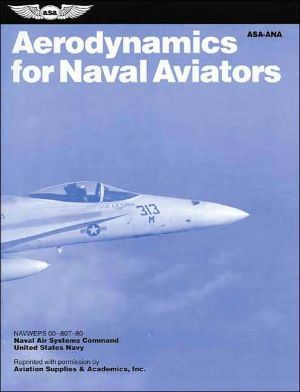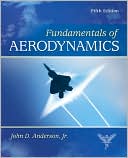Introduction to Flight
Search in google:
This book is intended for a one semester, freshman/sophomore level course entitled introduction to aerospace engineering or introduction to flight. Anderson's book continues to be a market leader. It has dominated the first course in the aero sequence since it was first published in 1978. It is the most accessible book on the market due to Anderson's ability to motivate the student with a unique historical view that provides a wealth of technical material.
About the AuthorvPreface to the Fifth EditionxvPreface to the First EditionxviiChapter 1The First Aeronautical Engineers11.1Introduction11.2Very Early Developments41.3Sir George Cayley (1773-1857)--The True Inventor of the Airplane61.4The Interregnum--From 1853 to 1891131.5Otto Lilienthal (1848-1896)--The Glider Man171.6Percy Pilcher (1867-1899)--Extending the Glider Tradition201.7Aeronautics Comes to America211.8Wilbur (1867-1912) and Orville (1871-1948) Wright--Inventors of the First Practical Airplane271.9The Aeronautical Triangle--Langley, the Wrights, and Glenn Curtiss361.10The Problem of Propulsion451.11Faster and Higher461.12Summary49Bibliography50Chapter 2Fundamental Thoughts522.1Fundamental Physical Quantities of a Flowing Gas562.1.1Pressure562.1.2Density572.1.3Temperature582.1.4Flow Velocity and Streamlines592.2The Source of All Aerodynamic Forces612.3Equation of State for a Perfect Gas632.4Discussion of Units652.5Specific Volume702.6Anatomy of the Airplane762.7Anatomy of a Space Vehicle872.8Historical Note: The NACA and NASA952.9Summary98Bibliography98Problems98Chapter 3The Standard Atmosphere1013.1Definition of Altitude1033.2Hydrostatic Equation1043.3Relation Between Geopotential and Geometric Altitudes1063.4Definition of the Standard Atmosphere1073.5Pressure, Temperature, and Density Altitudes1143.6Historical Note: The Standard Atmosphere1173.7Summary119Bibliography120Problems120Chapter 4Basic Aerodynamics1224.1Continuity Equation1264.2Incompressible and Compressible Flow1274.3Momentum Equation1304.4A Comment1344.5Elementary Thermodynamics1414.6Isentropic Flow1474.7Energy Equation1524.8Summary of Equations1554.9Speed of Sound1564.10Low-Speed Subsonic Wind Tunnels1624.11Measurement of Airspeed1684.11.1Incompressible Flow1714.11.2Subsonic Compressible Flow1744.11.3Supersonic Flow1784.11.4Summary1824.12Some Additional Considerations1834.12.1More on Compressible Flow1834.12.2More on Equivalent Airspeed1854.13Supersonic Wind Tunnels and Rocket Engines1874.14Discussion of Compressibility1954.15Introduction to Viscous Flow1964.16Results for a Laminar Boundary Layer2054.17Results for a Turbulent Boundary Layer2104.18Compressibility Effects on Skin Friction2134.19Transition2164.20Flow Separation2194.21Summary of Viscous Effects on Drag2244.22Historical Note: Bernoulli and Euler2254.23Historical Note: The Pitot Tube2264.24Historical Note: The First Wind Tunnels2294.25Historical Note: Osborne Reynolds and His Number2354.26Historical Note: Prandtl and the Development of the Boundary Layer Concept2394.27Summary242Bibliography244Problems245Chapter 5Airfoils, Wings, and Other Aerodynamic Shapes2515.1Introduction2515.2Airfoil Nomenclature2535.3Lift, Drag, and Moment Coefficients2575.4Airfoil Data2635.5Infinite Versus Finite Wings2715.6Pressure Coefficient2735.7Obtaining Lift Coefficient from C[subscript p]2785.8Compressibility Correction for Lift Coefficient2825.9Critical Mach Number and Critical Pressure Coefficient2835.10Drag-Divergence Mach Number2945.11Wave Drag (at Supersonic Speeds)3025.12Summary of Airfoil Drag3105.13Finite Wings3125.14Calculation of Induced Drag3155.15Change in the Lift Slope3215.16Swept Wings3295.17Flaps--A Mechanism for High Lift3425.18Aerodynamics of Cylinders and Spheres3485.19How Lift Is Produced--Some Alternate Explanations3525.20Historical Note: Airfoils and Wings3625.20.1The Wright Brothers3635.20.2British and U.S. Airfoils (1910 to 1920)3635.20.31920 to 19303645.20.4Early NACA Four-Digit Airfoils3645.20.5Later NACA Airfoils3655.20.6Modern Airfoil Work3665.20.7Finite Wings3665.21Historical Note: Ernst Mach and His Number3695.22Historical Note: The First Manned Supersonic Flight3725.23Historical Note: The X-15--First Manned Hypersonic Airplane and Stepping-Stone to the Space Shuttle3765.24Summary379Bibliography380Problems380Chapter 6Elements of Airplane Performance3856.1Introduction: The Drag Polar3856.2Equations of Motion3926.3Thrust Required for Level, Unaccelerated Flight3946.4Thrust Available and Maximum Velocity4026.5Power Required for Level, Unaccelerated Flight4056.6Power Available and Maximum Velocity4106.6.1Reciprocating Engine-Propeller Combination4106.6.2Jet Engine4136.7Altitude Effects on Power Required and Available4146.8Rate of Climb4196.9Gliding Flight4286.10Absolute and Service Ceilings4326.11Time to Climb4356.12Range and Endurance--Propeller-Driven Airplane4366.12.1Physical Considerations4376.12.2Quantitative Formulation4386.12.3Breguet Formulas (Propeller-Driven Airplane)4406.13Range and Endurance--Jet Airplane4446.13.1Physical Considerations4456.13.2Quantitative Formulation4466.14Relations Between C[subscript D,0] and C[subscript D,i]4506.15Takeoff Performance4586.16Landing Performance4646.17Turning Flight and the V-n Diagram4676.18Accelerated Rate of Climb (Energy Method)4746.19Special Considerations for Supersonic Airplanes4816.20Uninhabited Aerial Vehicles (UAVs)4856.21A Comment, and More on the Aspect Ratio4946.22Historical Note: Drag Reduction--The NACA Cowling and the Fillet4946.23Historical Note: Early Predictions of Airplane Performance4996.24Historical Note: Breguet and the Range Formula5006.25Historical Note: Aircraft Design--Evolution and Revolution5016.26Summary507Bibliography509Problems510Chapter 7Principles of Stability and Control5137.1Introduction5137.2Definition of Stability and Control5197.2.1Static Stability5207.2.2Dynamic Stability5217.2.3Control5237.2.4Partial Derivative5237.3Moments on the Airplane5247.4Absolute Angle of Attack5257.5Criteria for Longitudinal Static Stability5277.6Quantitative Discussion: Contribution of the Wing to M[subscript cg]5327.7Contribution of the Tail to M[subscript cg]5367.8Total Pitching Moment About the Center of Gravity5397.9Equations for Longitudinal Static Stability5417.10Neutral Point5437.11Static Margin5447.12Concept of Static Longitudinal Control5487.13Calculation of Elevator Angle to Trim5537.14Stick-Fixed Versus Stick-Free Static Stability5557.15Elevator Hinge Moment5567.16Stick-Free Longitudinal Static Stability5587.17Directional Static Stability5627.18Lateral Static Stability5637.19A Comment5657.20Historical Note: The Wright Brothers Versus the European Philosophy on Stability and Control5667.21Historical Note: The Development of Flight Controls5677.22Historical Note: The "Tuck-Under" Problem5697.23Summary570Bibliography571Problems571Chapter 8Space Flight (Astronautics)5738.1Introduction5738.2Differential Equations5808.3Lagrange's Equation5818.4Orbit Equation5848.4.1Force and Energy5848.4.2Equation of Motion5868.5Space Vehicle Trajectories--Some Basic Aspects5908.6Kepler's Laws5978.7Introduction to Earth and Planetary Entry6018.8Exponential Atmosphere6048.9General Equations of Motion for Atmospheric Entry6048.10Application to Ballistic Entry6088.11Entry Heating6148.12Lifting Entry, with Application to the Space Shuttle6218.13Historical Note: Kepler6258.14Historical Note: Newton and the Law of Gravitation6278.15Historical Note: Lagrange6298.16Historical Note: Unmanned Space Flight6298.17Historical Note: Manned Space Flight6348.18Summary636Bibliography637Problems637Chapter 9Propulsion6399.1Introduction6399.2Propeller6429.3Reciprocating Engine6509.4Jet Propulsion--The Thrust Equation6609.5Turbojet Engine6639.6Turbofan Engine6689.7Ramjet Engine6709.8Rocket Engine6749.9Rocket Propellants--Some Considerations6819.9.1Liquid Propellants6819.9.2Solid Propellants6849.9.3A Comment6869.10Rocket Equation6879.11Rocket Staging6889.12Electric Propulsion6929.12.1Electron-Ion Thruster6939.12.2Magnetoplasmadynamic Thruster6949.12.3Arc-Jet Thruster6949.12.4A Comment6949.13Historical Note: Early Propeller Development6959.14Historical Note: Early Development of the Internal Combustion Engine for Aviation6989.15Historical Note: Inventors of Early Jet Engines7009.16Historical Note: Early History of Rocket Engines7039.17Summary709Bibliography710Problems710Chapter 10Flight Vehicle Structures and Materials71310.1Introduction71310.2Some Physics of Solid Materials71410.2.1Stress71410.2.2Strain71610.2.3Other Cases71710.2.4Stress-Strain Diagram71810.3Some Elements of an Aircraft Structure72110.4Materials72410.5Fatigue72810.6Some Comments729Bibliography729Problems730Chapter 11Hypersonic Vehicles73111.1Introduction73111.2Physical Aspects of Hypersonic Flow73511.2.1Thin Shock Layers73511.2.2Entropy Layer73611.2.3Viscous Interaction73711.2.4High-Temperature Effects73811.2.5Low-Density Flow73911.2.6Recapitulation74311.3Newtonian Law for Hypersonic Flow74311.4Some Comments on Hypersonic Airplanes74911.5Summary758Bibliography758Problems758Appendix AStandard Atmosphere, SI Units760Appendix BStandard Atmosphere, English Engineering Units770Appendix CSymbols and Conversion Factors778Appendix DAirfoil Data779Index808
